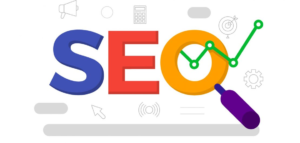SEO transforms websites from digital brochures into lead-generating tools that resonate with a business’s target audience. Ironchess SEO + Marketing leverages targeted keywords to attract and engage potential customers, resulting in more service calls and online bookings.

SEO is a scalable and reliable marketing channel for pest control companies that complements other traditional and paid advertising. Effective SEO strategies rely on relevance, user intent, and local targeting.
Keyword Research
A strong online footprint is imperative to business growth in the digital age. Whether a pest control company is looking to increase service calls, elevate online bookings, or become the go-to pest management authority in their region, SEO techniques serve as a formidable instrument for accomplishing these goals.
Keyword research is the foundation of any successful SEO strategy. Essentially, it’s the process of finding and evaluating keywords that relate to your products, services, or niche markets. By understanding the keywords that customers are searching for, you can tailor your content to better suit their needs and thus drive more organic traffic to your site.
Using a keyword tool can help you vet keywords by showing their monthly search volume, competitiveness, and conversion potential. By focusing on keywords that align with your business goals and resonate with your audience’s needs, you can craft relevant and impactful content that guides users smoothly through the decision-making process.
Pest control companies often operate in designated service areas, so incorporating localized keywords into your keyword strategy is a great way to target prospective clients who are nearby. This also helps ensure that your website is visible in the Google Map Pack when someone searches for pest control services near them.
When potential clients are researching pest control services, they’re usually looking for an authoritative source that can provide helpful information or solve their specific pest problems. Creating content that addresses frequently asked questions and provides solutions to common pest issues not only improves your visibility in the SERPs but also establishes you as an expert on the topic. Additionally, adding multimedia to your content — such as infographics and galleries — enhances engagement and further reinforces your expertise.
On-Page Optimization
Imagine waking up to see your pest control website swarming at the top of search engine results with visitors and clients flooding in—this isn’t just a dream; it can be a reality when you apply targeted SEO strategies. Our company illuminates the path to online visibility, elevating your site in a crowded digital landscape and establishing you as an authoritative and trustworthy source for both information and services.
On-page optimization is an essential component of any effective SEO strategy. It involves ensuring your site’s content is relevant and optimized for your target audience, leveraging proper use of keywords, structured data, and a mobile-friendly design. On-page SEO also includes the use of enticing titles and meta descriptions, which serve as a virtual welcome mat for users arriving at your web pages, guiding them smoothly toward conversion.
Keyword research is a critical element of on-page SEO, allowing you to zero in on specific terms or phrases your target audience uses when searching for your products and services. By incorporating these keywords into your content, you can attract more qualified leads and drive higher conversion rates.
Optimizing your site for local search can increase its visibility in a particular service area, boosting lead generation and sales while reducing marketing expenses. Local SEO utilizes techniques like geo-targeting, mapping, and listing to help you stand out to customers in your service area.
Creating engaging, informative blogs and social media posts is an effective way to showcase your expertise in pest control and build trust with your audience. Providing useful tips on how to prevent infestations and recognize early signs of pest problems positions you as a trusted resource, bolstering your brand authority and helping establish your business as a leading expert in the industry.
Content Optimization
When it comes to attracting more pest control clients online, a solid content strategy is essential. This involves optimizing your website’s on-page content — from keywords and meta descriptions to image alt text, ensuring all components work together to create a compelling SEO narrative.
Titles and descriptions are your digital storefront’s welcoming mat, and the right phrases invite the right customers to your site. Embed keywords smoothly into your page titles and meta descriptions, and craft clear, enticing headers that highlight the page’s content. Use H1, H2, and H3 heading tags to organize your content, underscore key themes, and increase readability.
Utilize image sizing and compression to shrink your site’s load time without sacrificing visual appeal. Deploy a CDN to cache your content over a vast network of servers worldwide, speeding up access for users across all locations.
Make sure your website pages are reliable, authoritative, well-written, and highly relevant. This reassures search engines that your content is trustworthy, and it also helps boost your organic rankings.
Social media platforms offer a powerful channel for amplifying your SEO efforts. Choose the ones that resonate best with your pest control services and target audience, and optimize your profiles to maximize their impact.
Local SEO is one of the most important components of any digital marketing strategy, as it helps you rank higher in SERPs for searches conducted by people located within your service area. Embed location information in your website’s URLs and page titles, utilize geo-targeting in your SEO strategy, and promote your business on local directories. In addition, you can improve your local visibility by optimizing your Google My Business listing and using relevant keywords to get found by your target market.
Link Building
Link building is an essential SEO technique that boosts organic traffic and search engine rankings. By creating high-quality links from reputable sources, you can demonstrate to Google that your content is valuable and authoritative. It’s also a great way to get in touch with other businesses in your industry and create digital connections. However, it’s important to remember that link-building tactics must be natural and relevant to succeed. Otherwise, Google will penalize your website and devalue your backlinks.
Local SEO is key for pest control businesses because it helps you rank higher in local search results when potential customers are searching for services like yours. For example, if someone searches for “pest control in [your area],” you want your website to be among the top results. For that, you need to optimize your content with location-specific keywords and create high-quality, local content that resonates with your audience.
For instance, you can write blog posts that address common pest issues in your city such as “How to Prevent Pests at Home” or “Top Pest Control Services in [your area].” You can even leverage review management tools like DemandHub to showcase glowing testimonials from past clients on your website and gain more credibility. In addition, don’t forget to keep refining your SEO techniques based on new social media and search engine trends. Persistent evaluation, testing, and tweaking are the best ways to achieve consistent SEO growth.
Technical SEO
A robust digital footprint is critical for pest control companies to thrive. SEO provides a powerful tool to strengthen that presence by helping search engines find your website, and then rank it high in search results.
Achieving a high ranking doesn’t come easy, however. Search engines rely on a variety of factors to determine which websites deserve top spot in their results. The more quality votes your site receives, the higher it will rank. This is why it’s important to focus on both on-page and off-page SEO techniques.
Optimizing your on-page content is one of the most important technical SEO strategies for pest control marketers to master. Use keyword research tools to hone in on the specific terms your target audience uses when looking for your services. This helps you decode the exact intentions and needs behind each search query so your content aligns with their goals and expectations.
To further optimize your on-page content, create keyword-optimized page titles and meta descriptions. These will appear in search engine results and influence click-through rates. Ensure each page has a clear, enticing description of its content and why users should visit.
Incorporating local search terms into your website also boosts visibility and establishes relevance. For instance, including city and neighborhood-specific keywords on your website demonstrates to both searchers and Google that you are a local pest control provider who serves a specific region.
Lastly, internal linking is another essential technical SEO strategy for pest control marketers to consider. Strategically linking pages of your website together demonstrates to search engines that these pages are relevant and informative. This also distributes PageRank across your site and improves the user experience.
